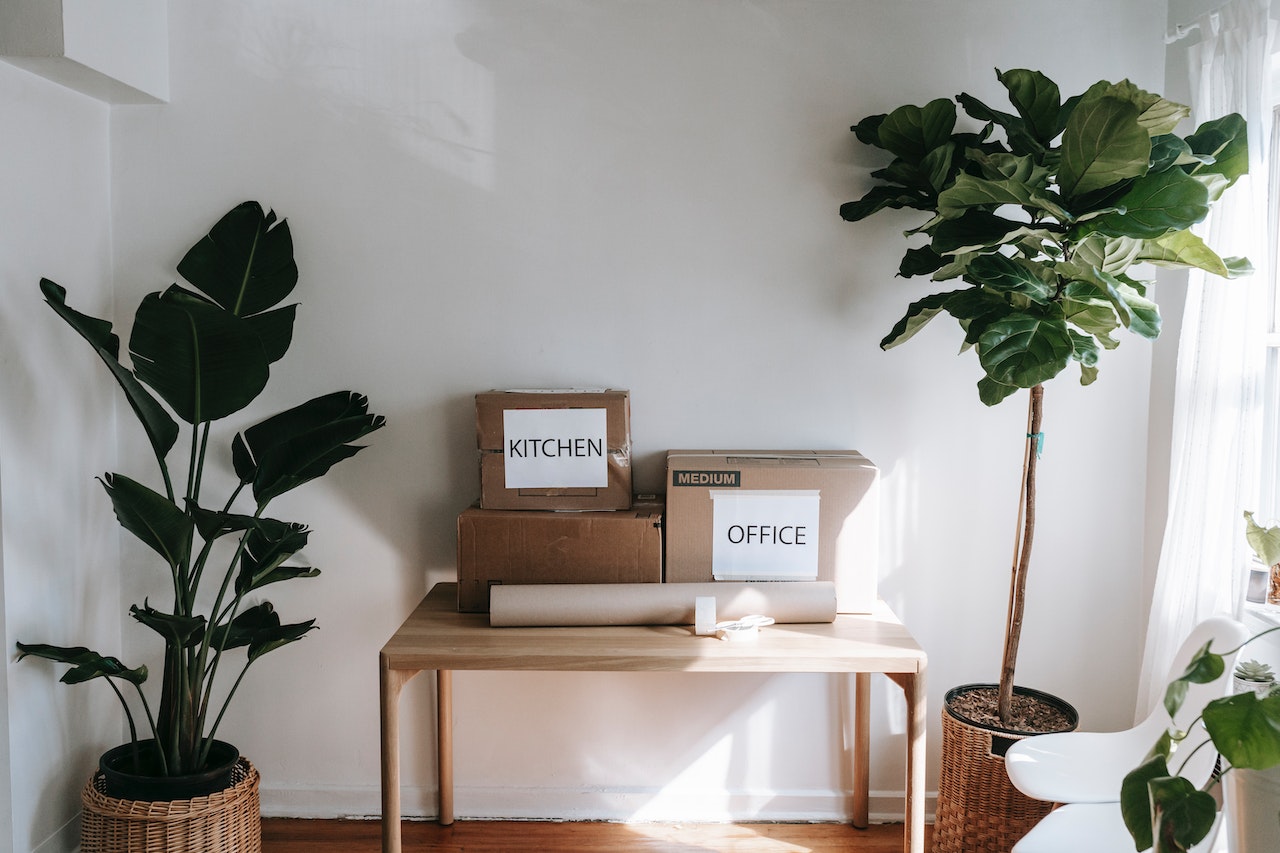If you’re feeling overwhelmed with the amount of clutter in your life and don’t know where to start, you’re not alone. In this article, we’ll be sharing a few ways to declutter your home to help you take back control of your space. So, grab a cup of coffee, get comfortable, and let’s get started.
How to Start Decluttering Your Home
Decluttering your home is a process, and it won’t happen overnight. But with a little bit of effort and tenacity, you can create a more organized and peaceful living space. Here's a practical guide.
1. Identify your decluttering goals.
What do you want to achieve by decluttering? Do you want to downsize, organize your home, or simply get rid of excess stuff? It’s important to have a clear idea of what you want to accomplish before beginning your project.
2. Choose the main areas to declutter.
Does the thought of decluttering your entire house overwhelm you? If so, create a critical clutter list by picking the top three areas at home that you need to organize the most.
If you’re still overwhelmed, that’s totally fine. Start with just one room, and identify three major areas you need to clean there. The idea is to take small steps and work your way up. For example, you decide to declutter the kitchen first. Start with the fridge and then work your way to the kitchen cupboards and the pantry until you cover the entire area.
Stay focused and stick to the plan you’ve established. Don’t give in to the temptation of tidying up another room just yet. It’s a distraction that could sabotage your decluttering process.
Summary: Start with one room and identify the top three areas that need decluttering. Focus on this room until you’re done.
Decluttering Starter Tips
- Start your journey in a room with minimal clutter. You can finish it quickly, and the instant gratification helps motivate you to keep going.
- Get rid of expired items, especially medicine and skincare products.
-
Make your way through each piece of furniture, drawer by drawer, and resist the urge to shove things back. Aim to reduce items by 50 percent.
3. Set a decluttering schedule.
Get ready to tackle your home organization with a strategy. Sit down, take a deep breath, and make a plan. Here’s a quick breakdown to help you get started:
- Determine your timeline. Do you want to finish decluttering in a weekend, a month, or over the holidays? Set a date.
- Decide on the amount of time you’re willing to commit. For example, you set a goal of spending 20 to 30 minutes each day decluttering or 3 hours each weekend.
- Break down your decluttering checklist into smaller tasks. For example, if your goal is to declutter your closet, a task might be to sort through all your shoes.
4. Make the piles simple: Keep or Don’t Keep
When it comes to decluttering, it’s important to find a strategy that aligns with your goals. One method is to categorize items into keep, repair, recycle, donate, or trash. The widely popular KonMari Method™ has a more direct approach, encouraging you only to keep items that spark joy.
Sorting your stuff can be time-consuming, so it’s best to keep it simple. If you don’t want to go with KonMari, divide your things into two piles: Keep or Don’t Keep. For the things you’re keeping, organize them. And for the things you’re not keeping, just let them go or donate them. Do the sorting quickly, like ripping off a bandaid.
5. Shop or make organizers based on the “Keep” pile.
It’s hard to say what kind of organizers you need until the basic decluttering process is completed. To start working on your Keep pile, separate the essentials from the sentimental items. Organize the essentials right away. Meanwhile, let the nostalgic keepsakes marinate for a month or two, then check again if you still wish to keep them by then.
Here are a few tips for choosing organizers:
- Make a list of what needs to be stored and where before shopping for organizers.
- Consider how you’ll use the organizers. Do you need drawers, shelves, or hanging space? Will you store clothes, shoes, or other items? Choose an organizer with the features you need.
- Always check the storage space and measure before buying organizers.
- For drawer dividers, opt for modular pieces that you can arrange seamlessly.
Or, you can skip shopping. There are materials around your home that you can reuse. Old cereal boxes can be made into magazine holders or desk organizers. Mason jars can store small office supplies or utensils. An old shoebox can be repurposed as a drawer divider or for craft supplies.
6. Declutter regularly from now on.
Make decluttering a part of your routine. You don’t have to do it every day. Just a little bit each week can do wonders. Consistent decluttering makes the process less overwhelming. You won’t have to face a massive mess all at once because your space is already regularly organized.
Do small tasks from time to time, like organizing a bathroom cabinet, a knickknack drawer, or a children’s toy box. Each task completed is a step towards a decluttered space.

More Practical Decluttering Tips
These practical decluttering tips can help you get started on the path to a more organized environment.
1. Get help from a friend.
Ask a trusted friend or family member to help you decide whether you “keep” or “toss” an item. Let them choose which things to keep or discard. If you have a solid reason to keep an item, they must agree. If not, wave goodbye to that clutter.
2. Tackle flat surfaces first.
A quick way to reduce clutter in your home is to remove all items from flat surfaces, such as countertops and nightstands. Only keep essential items and store the rest in drawers, bins, or hooks.
3. Discard before you buy.
This is more like a tip to prevent clutter.
Make it a rule only to buy something new once you let go of something you already have. Or you can be more mindful of what you bring into the house. This makes it easier to keep your home organized and saves you time and money.
4. Follow the 90/90 rule when sorting items.
Follow the 90/90 Minimalism Rule. This method will help you sort out what’s truly essential and what’s just taking up space.
Take a good look at your stuff. When was the last time you used it? If it’s been over 90 days, ask yourself if you’re really going to use it in the next 90 days. If your answer is a resounding NO, then it’s time to let it go.
5. Donate things you value but no longer need.
Give extra clothing and household items to people in need. You may find that it’s easier to part with stuff knowing that someone else will cherish them more.
Note: When you donate things, make sure that they’re clean and functional.
6. Don’t keep something just because it was a gift.
Giving up something a loved one gave you is difficult, and feeling a little guilty about it is normal. But when you feel it’s time to let it go, you must.
It may benefit someone else more. The fact that it was presented to you with good intentions should give you some solace. Now, you’re letting it go with the best intention for your well-being.
Related Articles:



Leave a comment
This site is protected by hCaptcha and the hCaptcha Privacy Policy and Terms of Service apply.